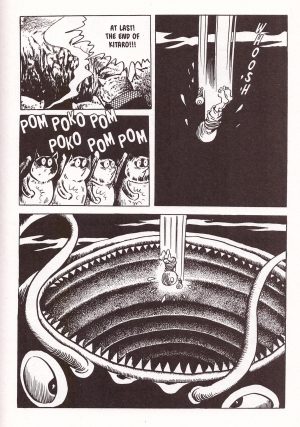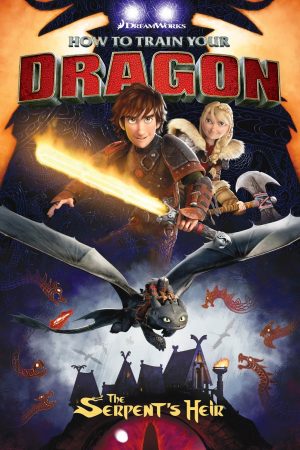Review by Ian Keogh
Drawn and Quarterly’s third selection of Shigeru Mizuki’s Kitaro stories presents their longest to date, 1967’s title story running 121 pages. Tanuki are an actual species of animal, known as a Raccoon Dog in English, despite being more closely related to foxes, but they’re also a popular form of ghost monster, or Yokai, and the war begins when construction work breaks the magical seal trapping them beneath the Earth. 800 of them emerge into Tokyo, and Mizuki ties that in with legends of a giant catfish that lives beneath Japan.
It differs from later Kitaro stories as it’s more straightforward adventure, infused with legends of other Yokai. Mizuki also plots this on a grander scale, as an epic. The menaces Kitaro dealt with in earlier books were almost all localised, most of them only affecting a few people and dispatched without the knowledge of the wider world. The Tanuki are different. Mizuki emphasises their threat by involving the Japanese Prime Minister early on, and consistently explaining why it is the military forces can’t deal with the Tanuki. Once they take over, the humour returns a little, but Mizuki keeps the tension high, and Kitaro relatively powerless. The sample art, which could be one of Jim Woodring’s nightmares, displays one means of ensuring Kitaro doesn’t interfere, and equally strange and disturbing visions are supplied.
While providing thrills and magic, ‘The Great Tanuki War’ isn’t as satisfying as the shorter Kitaro stories, and the tendency to pull solutions from left field at the last moment is more pronounced than in them. One interesting sociological aspect is that the World War II veteran Mizuki has a prominent heroic role for the American armed forces.
Two shorter stories round off the collection. Kitaro only plays a small part in the first, in which his half human, half Yokai companion Nezumi Otoko takes centre stage, attempting to do something selfless for once. Can Kitaro’s good influence be rubbing off on him? The threat in the second story is another released by construction work, dozens of eyes able to transfer from fabric to fabric, so providing a creepy visual effect. Otako returns to poor form, and there’s no sentimentality about the ending. It’s the funniest story in the collection as well.
There’s much to enjoy about ‘The Great Tanuki War’, but it rambles, indicating that Mizuki is best confined to the shorter story, except that’s not the case as is seen in later volumes. Kitaro’s Strange Adventures is next on the schedule.





